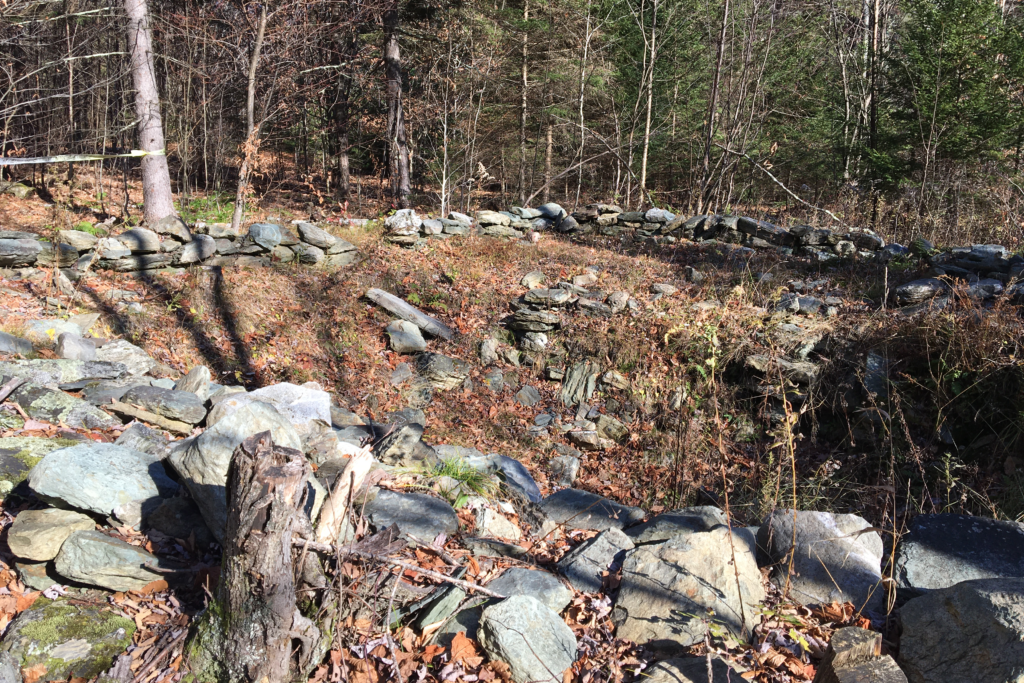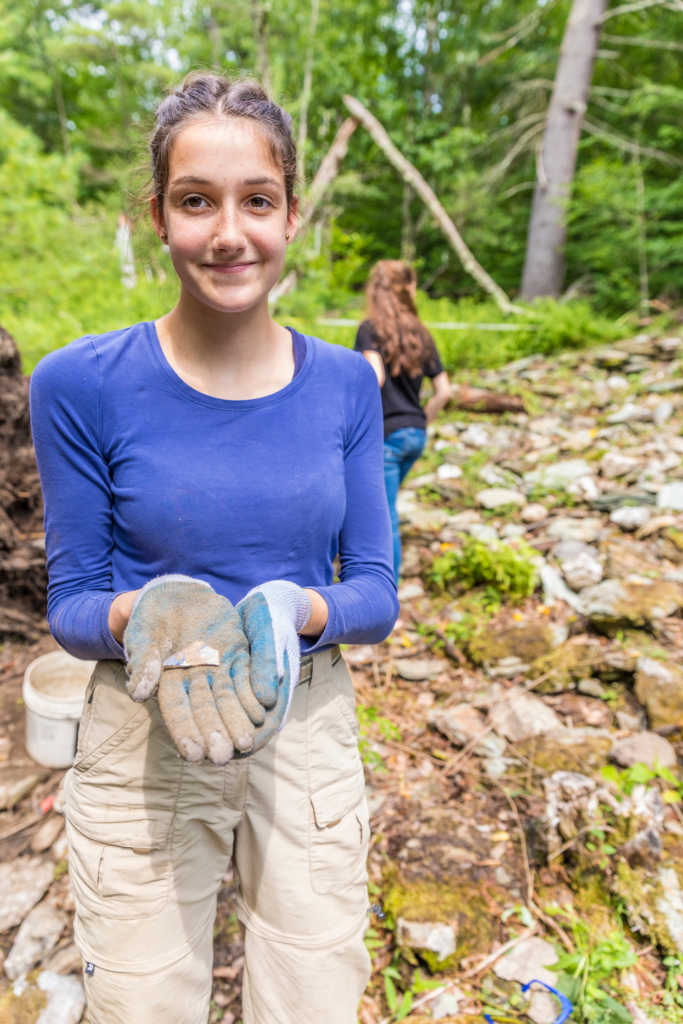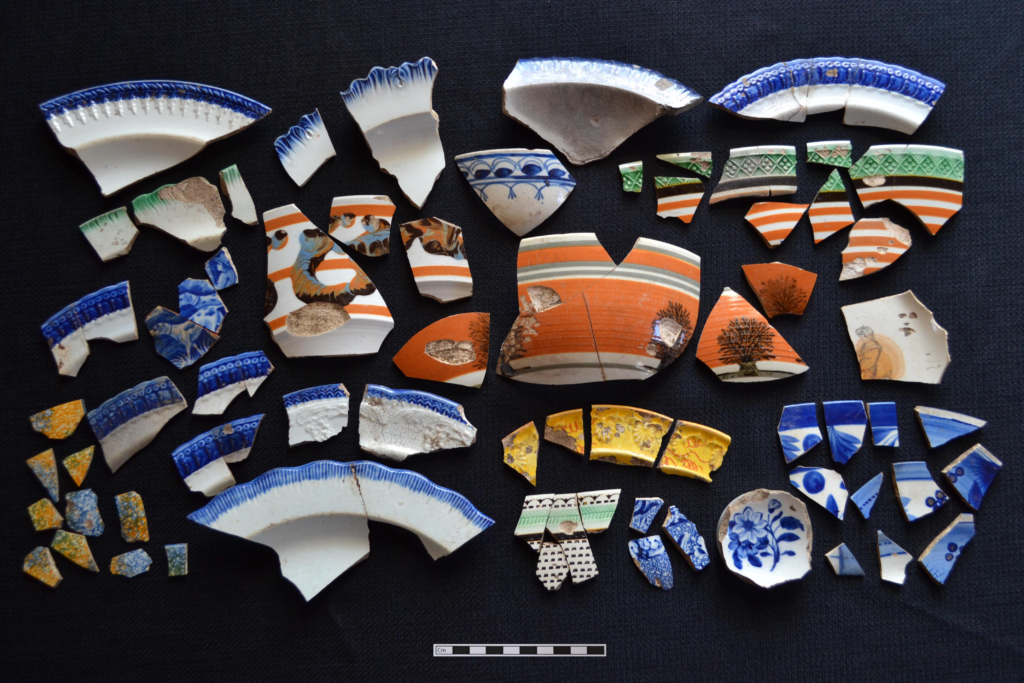A Snapshot of Subsistence and Rebellion
By Kelley Berliner
The Egg Mountain site consists of a hillside settlement that was likely occupied from the late 1700s until approximately 1820. At least a dozen cellar holes, combined with stone walls and other landscape features, suggest this was the location of a sizeable community. The site is undisturbed, and the archaeological deposits offer a picture of a late eighteenth-century rural settlement in Vermont.

Photo By Kelley Berliner | 2022
The site is also the likely place that Daniel Shays fled to after leading an uprising of farmers in his home state of Massachusetts in 1786 and ’87 due to a debt crisis and high taxes.
Shays led the rebels, known as Shay sites, in an attack on the Springfield armory. When they were fired on by a militia protecting the armory, the Shaysites fled and the uprising was effectively over. Most of the leaders, including Shays, escaped to New Hampshire and Vermont.

Photo by Jerry Monkman | 2022
Stephen Butz, a New York high school teacher who is currently pursuing a doctorate in archaeology, has extensively researched the site and carried out archaeological field schools as part of the Shays Settlement Project. Butz and his students have mapped features of the site and uncovered artifacts such as metal tools, ceramics, belt buckles, pipe stems, faunal remains, and glass that date to the late eighteenth century. Butz has also conducted extensive archival research suggesting that Shays fled to this settlement.
This portion of Egg Mountain was acquired by The Conservation Fund in 2017 as part their purchase of 23,000 acres known as the Cowee Forest Tract, which covers an area in Vermont, Massachusetts, and New York. Upon learning that the Egg Mountain site was on their property, The Conservation Fund contacted the Vermont Division for Historic Preservation, who in turn suggested contacting the Conservancy.

Photo by Stephen Butz | 2022
A grant from the Vermont Housing and Conservation Board will help cover the costs of surveying and purchasing the property, which is about ninety acres in size. The board previously partnered with the Conservancy to acquire the Verburg site, and it has developed a Policy on Archaeological Resources as part of its conservation goals.
“Perhaps the most noteworthy aspect of the Egg Mountain settlement to the general public is its likely association with Daniel Shays,” Jess Robinson, Vermont’s State archaeologist, said. “Quite apart from him, however, the age, integrity, and early abandonment of the archaeological complex make it one of the most important early historic sites in Vermont.”
This article was originally published in the Summer 2022 edition of American Archaeology magazine. The PDF of this article from page 47 of the magazine can be downloaded here.
©️ The Archaeological Conservancy | 2022



